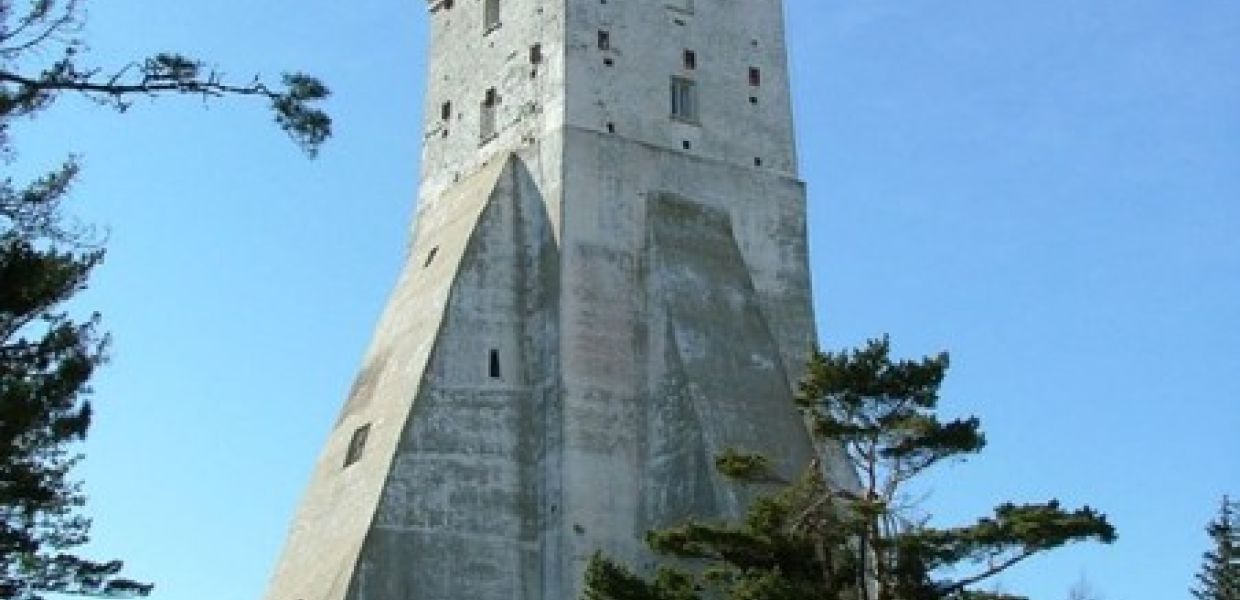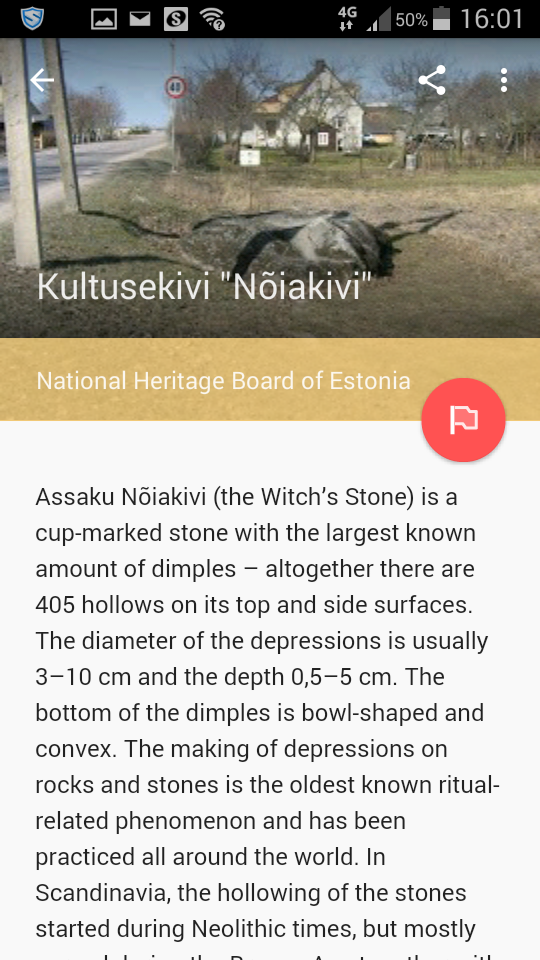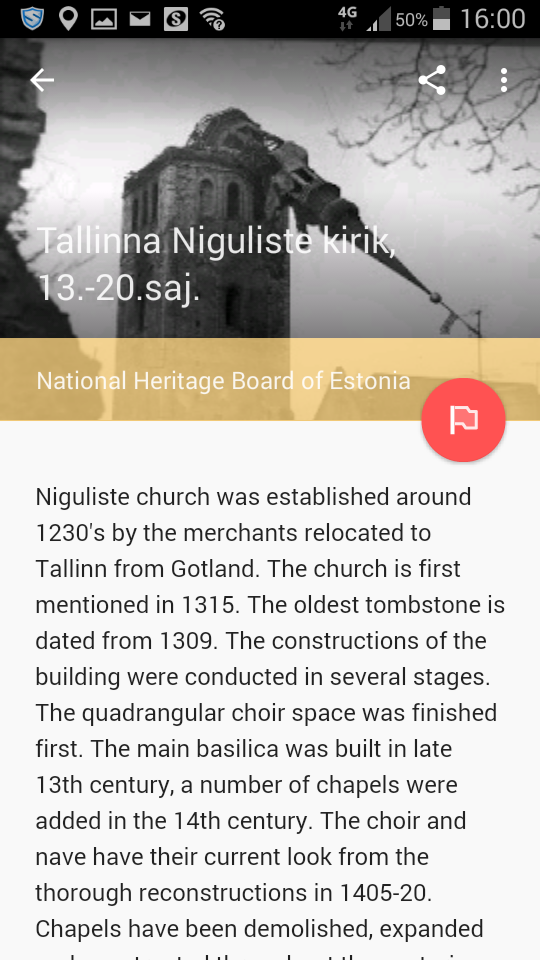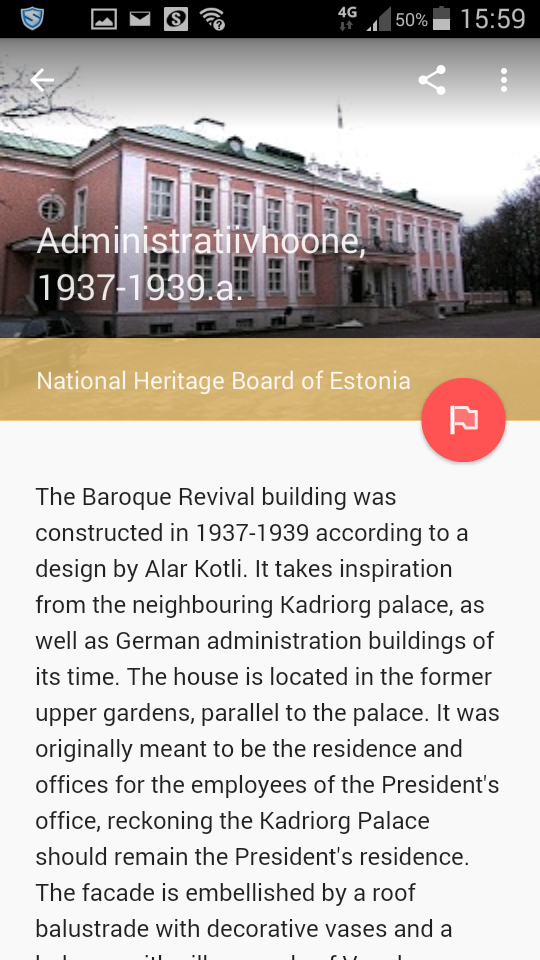Promoting Estonia in Google's Field Trip: a guest blog by the Estonian National Heritage Board

By Urve Russow, National Heritage Board of Estonia
This is the last in a three part series of guest blogs about Europeana’s pilot project with Google’s Niantic Labs to add cultural heritage data to Google’s Field Trip app. Here, the National Heritage Board of Estonia talk about why they joined the project.
The National Heritage Board of Estonia, which looks after conservation of Estonia’s cultural heritage, also runs the only database of the nation’s monuments, The National Register of Cultural Monuments. This database contains diverse information about all national monuments in the country cared for by the state, and its data – relating to over 10,000 monuments across Estonia - can be found via Europeana.
We got involved with the pilot project with Google’s Field Trip as we were looking for new initiatives which support our strategy to promote Estonian cultural heritage as widely as possible, both nationally and internationally.
We want to use modern technology to reach fresh audiences in new and exciting ways. By having our content in Google’s Field Trip, we can use Google’s geolocation technology to provide interesting historical information to travellers exploring Estonia. We can reach tourists on the go, on their preferred device (Android/iPhone) and in their preferred language too.

A highlight from the Estonian dataset, the Kõpu lighthouse. The National Heritage Board of Estonia, CC-BY-SA.
It is our first project showcasing Estonian cultural content on mobile devices with such extensive outreach (the app has over one million downloads). It offered a unique opportunity to drive innovation in the region, setting an example in our own country and at EU-level.
With Europeana, we chose a curated selection of monuments for the app, ensuring there was rich contextual information for each. Though it was not a requirement of the project, we also worked hard to translate the rich narratives for each object into English, to make them even more easily re-usable in other international projects.



Examples of the Estonian dataset in Google's Field Trip app.
The project has been very interesting to work with, and we plan to continue to submit new content, and improve metadata for existing content in Europeana to make it eligible for inclusion in the project.
We wish to invite as many people as possible to enjoy Estonia’s fascinating cultural heritage – we are delighted that it is there, waiting for you, in Google’s Field Trip app!
